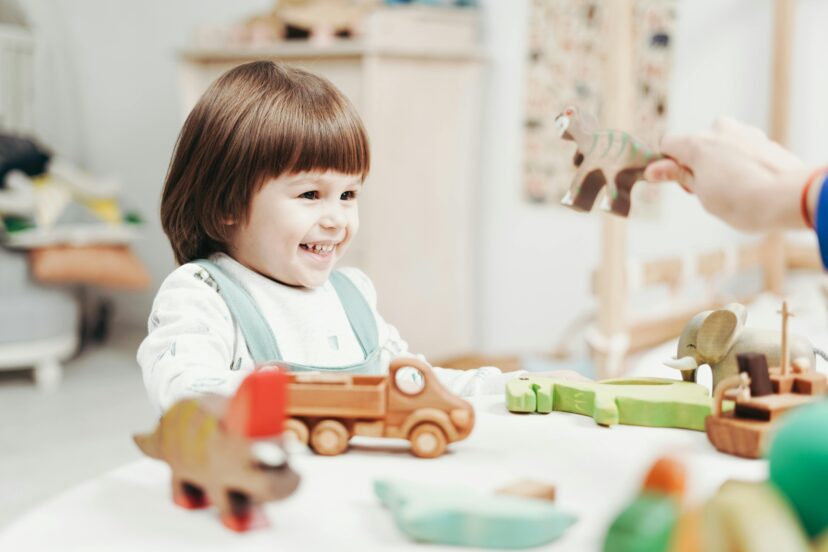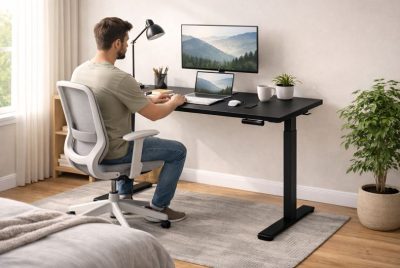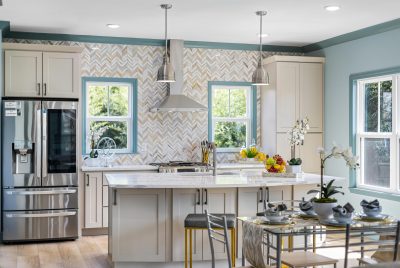7 Ergonomics For Kids’ Playrooms
We may earn a commission for purchases made using our links. Please see our disclosure to learn more.
Designing a playroom sounds fun, right? A splash of color, a cozy corner, maybe a toy chest or two. But let’s pause for a second. What if we told you that a well-designed playroom isn’t just about how cute it looks? Actually, it’s also about how comfortable, healthy, and safe it is for your child’s growing body. That’s where ergonomics comes in. Ergonomics isn’t just for office chairs and keyboards—it’s for everyone, including kids. Especially kids. Their bodies are still developing, which means the spaces they use every day should support their movement, posture, and activities in a thoughtful way. Let’s explore 7 ergonomics for kids’ playrooms that’ll make you rethink how you set up the most fun room in the house.
Why Ergonomics Matter in a Child’s Space
Think of ergonomics as the art and science of creating a space that fits the person using it—not the other way around. Kids bend, twist, build, draw, and sit in all sorts of positions. If their environment doesn’t support that movement safely, discomfort or even injury could follow. Good ergonomics for kids in a playroom help with posture, reduce strain, encourage focus during quiet play, and even make cleanup easier.
Research strongly supports the need for ergonomically designed environments tailored to children’s unique needs. A validated tool developed in the study on the ergonomics assessment of preschool playrooms offers a framework to evaluate how well a playroom supports healthy posture and movement. Similarly, findings from a study on the impact of poorly designed school furniture on children’s posture reveal that mismatched furniture can lead to discomfort and long-term posture issues, highlighting the importance of child-appropriate design even in play environments.
1. Start With the Right-Sized Furniture
Would you want to sit at a desk where your feet dangle like a child’s in a grown-up chair? Neither do kids in adult-sized furniture. Choose tables and chairs that match your child’s height. Knees should bend naturally at a 90-degree angle, feet flat on the floor, and arms comfortably resting when coloring or crafting. Adjustable furniture is a bonus—it grows as your child does. Providing children with appropriately sized furniture and tools, such as ergonomic writing tools for children, can significantly enhance their comfort and posture during play and learning activities.
2. Think Low—Storage Should Be Kid-Accessible
Storage is more than a place to toss toys. It’s part of ergonomic design. Keep bins, shelves, and drawers low enough for kids to reach without climbing or stretching. That way, they can grab what they need and put things back easily—bonus points for encouraging responsibility. Also, open bins and soft-close drawers help little fingers avoid painful pinches.
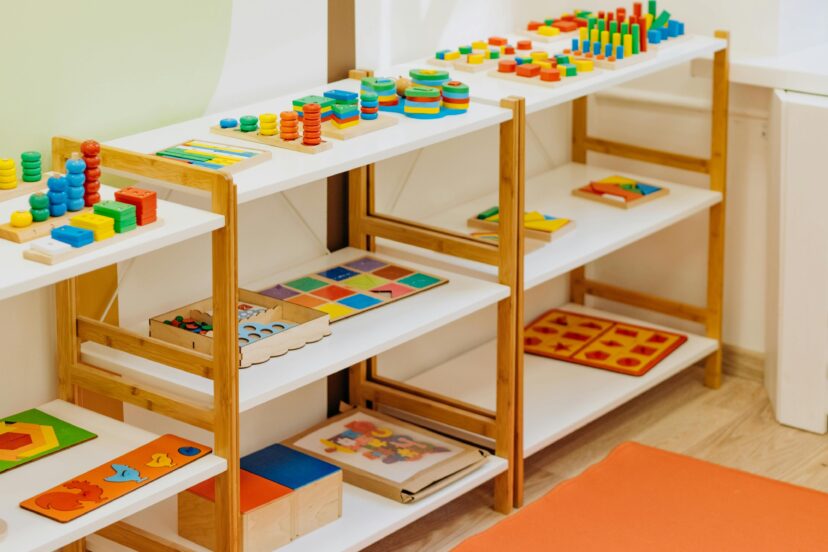
3. Floor Play: Comfort Meets Support
Kids love the floor. It’s where puzzles come to life, toy cars zoom, and castles rise. But hard floors aren’t always play-friendly. Add a soft-yet-supportive rug or foam mats. These protect joints, reduce slips, and act like mini shock absorbers during play. Avoid super thick plush carpets, though—they make it hard to build on or roll toys across.
4. Lighting: The Unsung Hero of Ergonomic Design
Lighting might not be the first thing on your list—but it should be. Poor lighting strains young eyes and makes it harder to focus. Natural light is gold. Position play zones near a window if possible. For darker corners or nighttime play, opt for warm, diffused lighting to create a cozy, inviting vibe without being harsh. Want a fun tip? Try light-up drawing boards or night-sky projectors—they mix functionality with a touch of magic.
5. Create Multiple Play Zones (With Purpose)
One space, many functions. That’s the ergonomic magic trick. Design different zones within the room: a reading nook with a beanbag chair, a craft station with a low table and supplies, a building area with easy-to-clean flooring, and a pretend play corner. Each zone should be intentionally designed for how it’s used—like using a small, angled drawing board to improve wrist position and avoid slouching.

6. Keep Movement in Mind
Kids don’t just sit still. They climb, jump, stretch, and roll. Their playroom should invite healthy movement. Think of adding low climbers, soft tumbling mats, or even a mini climbing wall. These support gross motor development and burn off energy safely indoors. Plus, physical movement balances the fine-motor skills used in crafts or reading.
7. Encourage Healthy Posture (Without Being the Posture Police)
Posture starts young. If kids hunch over crafts or slump while reading, their bodies take the hit. But don’t worry—there’s a gentle way to help. Offer variety. Kids don’t need to sit stiff like little soldiers. Provide seating options: floor cushions, wobble stools, beanbags, and even small kneeling pads. Let them shift naturally while keeping their spine supported.
Top Ergonomic Picks for a Kid-Friendly Playroom Setup
Looking to bring the tips from this article to life? Here’s a list of thoughtfully selected items that align with ergonomic principles—making your child’s playroom safer, comfier, and more functional.
1. Adjustable Kids’ Desk and Chair Set
Perfect for growing kids, these sets allow you to adjust the height as they age—ensuring proper posture for reading, writing, and crafts.
2. Foam Floor Mats or Play Rugs
Supportive and soft underfoot, these protect joints during play and reduce the risk of slips or falls. Look for mats that are non-toxic and easy to clean.
3. Low Open Storage Bins with Labels
Encourage independence and reduce strain by keeping toys within reach. Clear labels or pictures help even the youngest kids tidy up with ease.
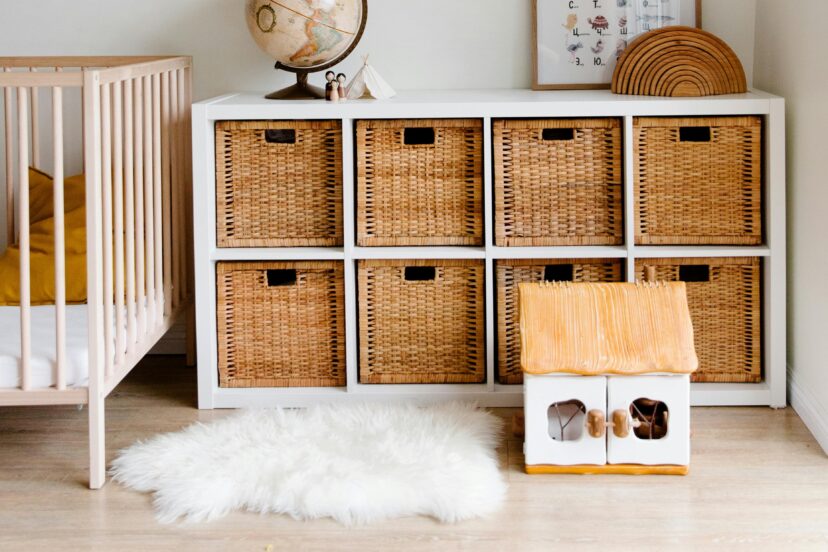
4. Soft Seating Options
Consider bean bag chairs, floor cushions, or wobble stools that allow flexible movement while still providing support.
5. Child-Safe LED Desk Lamp
Good lighting is a must. Choose warm, flicker-free lighting that reduces eye strain during art or reading time.
Want to build the ultimate playroom? These items are your toolkit for transforming any space into a fun, functional, and body-friendly haven for kids.
Conclusion
Creating an ergonomic playroom isn’t about following a rulebook—it’s about paying attention to how your child moves, learns, and grows. When a space is designed with ergonomics for kids, it becomes more than just four walls and a toy bin. It becomes a haven where your child feels free, safe, and supported. So the next time you walk into your child’s playroom, look around and ask: does this space fit my child—or is my child trying to fit into the space? Make the change. Little adjustments can spark big joy.
FAQs
1. What is the best age to start thinking about ergonomics for kids in a playroom?
As soon as your child starts using the space regularly—usually around toddler age. The earlier you set the foundation, the better it supports their development.
2. Are expensive ergonomic furniture pieces necessary?
Not at all. It’s more about fit than price. Look for adjustable, child-sized pieces that offer support and comfort. Sometimes simple cushions or low tables work just as well.
3. How can I keep the playroom both ergonomic and fun?
Blend form with function! Use bright rugs that double as comfy play mats, soft storage bins, and multi-purpose furniture like art tables that convert into game stations.
4. How often should I update the playroom setup?
Check in every six months. Kids grow fast, and their needs change. A quick refresh—adjusting chair height, rotating toys, or changing lighting—can keep things ergonomic.
5. Can I use ergonomic principles in a small space?
Absolutely. Ergonomics isn’t about size—it’s about thoughtful use. Even in a small corner, you can create comfort with a well-sized chair, soft mat, and good lighting.

